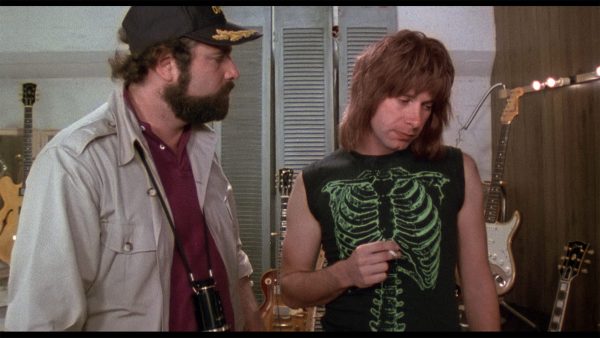
What opens Werner Herzog’s Ghost Elephants, even before we hear the German filmmaker’s distinctive cadence, is the National Geographic logo. While production credits are far from noteworthy in most cases, this one may stand out to the viewer by implying a certain documentary paradigm––call it “mainstream,” or simply: formulaic and easy-to-digest––at odds with Herzog’s streak of mysticism. A director so devoted to the most abstract and obscure parts of life, nature, and history, Herzog has nevertheless excelled in securing funding from sources like the French ARTE, BBC, and History Channel to tell the stories he finds fascinating. His documentaries are rooted in an innate, unadulterated fascination with people’s dreams and aspirations––in Ghost Elephants, National Geographic explorer and wildlife researcher Dr. Steve Boyes.
With a face in a close-up glowing with awe, Boyes gazes at a taxidermied elephant in the Smithsonian museum. The hollowed-out double of the Fénykövi Elephant, what we learn is the largest land animal ever recorded, towers over the scientist in a reminder of its death. Later in the film come some archival snippets belonging to Hungarian Josef J. Fénykövi, who shot the mammal in 1955, as well as a rather chilling photograph of him radiant, next to the toppled “game.” Instead of outright condemning the act, Herzog emphasizes a possible continuity between Fénykövi (first and foremost a businessman) and wildlife scientists today, and how preservation and contemporary DNA research can uncover a mystery. Do ghost elephants exist? Are there any descendants to this 11-ton creature, who goes by a more affectionate name in the museum, Henry?
Early on, Herzog suggests that perhaps ghost elephants are to Boyes what the white whale is to Captain Ahab in Moby-Dick, with which the latter agrees. He describes those bull elephants as morphologically different than others on the continent, emphasizing their long legs and stature while using words like “floating” and a poetic turn of phrase to paint a picture––not only of the mythical animals, but also of their native Angolan wetland plateau known as “Land at the End of the Earth.” In Boyes’ words, seeing the place itself is like “living in a dream you’ve never had,” to which Herzog responds with a rhetorical question of a similar pathos: whether the future of all animals is to be in a dream.
Herzog’s commentary envelops Ghost Elephants like a storyteller’s cloak, recounting not only the work done by and kept in the Smithsonian vaults, but also Dr. Boyes’ expedition to the highlands of Angola. The journey begins in Namibia, where the few remaining (and very best) master trackers of the Bushmen dwell––the last people, per Herzog, who can find and recognize an individual bull elephant. In fact, more than half of the film is spent in preparation for the trip, the camera present for interviews, personal stories, even rituals sacred for the community. Herzog of course reveres his subjects, the affection in his voiceover as palpable as it can be, but he also manages to be a little cheeky. “I know I shouldn’t romanticize this,” he says over a scene where an elderly tribal musician plucks at his instrument against the desert backdrop and a few hens flutter around him, “but I feel right now, surrounded by chickens, that it cannot get any better than this.” This self-aware Herzogian narration might be a new favorite of mine.
Ghost Elephants breaks from NatGeo aesthetics a few times, mainly through the use of low-angle shots and wide lenses to frame Boyes and trackers, as well as the insistent close-ups and a ringing, dramatic score. There’s very little nostalgia, though, even if the film is about dreams and imagination, or in other words: what is gained if the dream were to become reality. In this aspect, Ghost Elephants does resemble a NatGeo doc more than a Herzog film: it remains deeply rooted in the present, with the whole point of this expedition being to attain DNA samples from living bull elephants and trace their lineage. Yet the yearning persists: in Boyes’ stark blue eyes and somewhat absent look, in Herzog’s admiring tone of voice, and a ghostly smartphone video of what could be the largest living land animal today––glimpses of hope to be found in the unlikeliest of places.
Ghost Elephants premiered at the 2025 Venice Film Festival.
The post Venice Review: Ghost Elephants is Werner Herzog’s Yearning, Materialized first appeared on The Film Stage.










